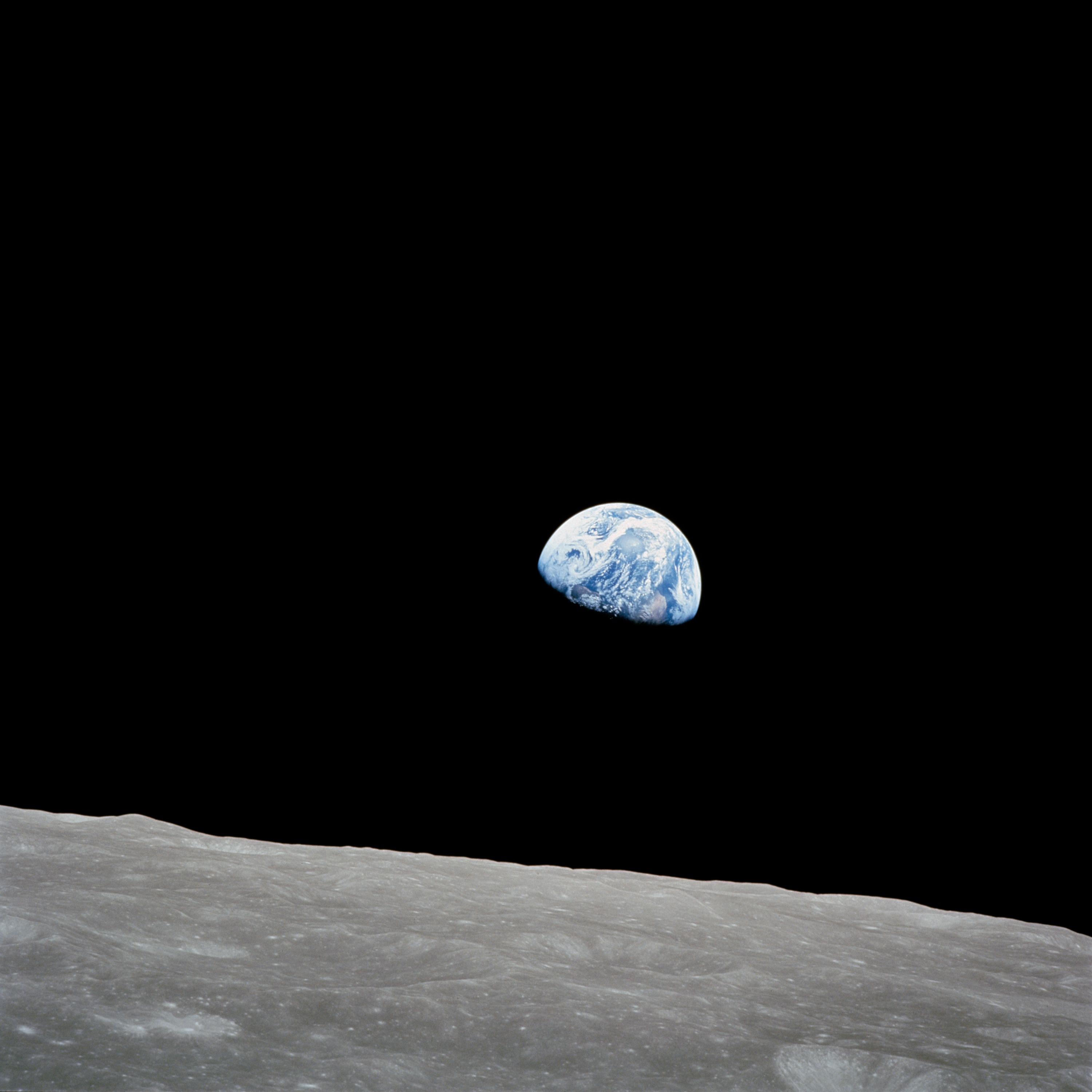 Truly the voyage of Apollo 8 over the Christmas period in 1968 carried with it the most profound message of the Greatest Story Ever Told: a message of peace, goodwill and harmony to the inhabitants of Planet Earth. Photo Credit: NASA
Truly the voyage of Apollo 8 over the Christmas period in 1968 carried with it the most profound message of the Greatest Story Ever Told: a message of peace, goodwill and harmony to the inhabitants of Planet Earth. Photo Credit: NASA
Five decades ago, in December 1968, three men were launched atop the most powerful rocket ever brought to operational status—the Saturn V—to begin a mission more adventurous, more audacious, more challenging and more dangerous than had ever been attempted. As described in last weekend’s AmericaSpace history article, and in Part 1 of this series, Apollo 8 astronauts Frank Borman, Jim Lovell and Bill Anders roared away from their Home Planet and re-lit the third stage of their launch vehicle in an event somewhat innocuously described as “Trans-Lunar Injection” (TLI). That six-minute firing propelled them out of Earth’s gravitational clutches for the first time in history and set them on course to visit our closest celestial neighbor, the Moon.
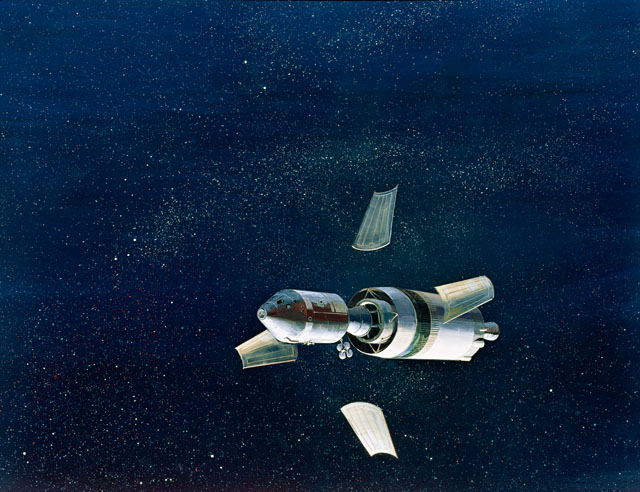 A North American Rockwell artist’s concept of the Spacecraft/Lunar Module Adaptor (SLA) panels and the S-IVB third stage being jettisoned, soon after Trans-Lunar Injection. Image Credit: NASA/North American Rockwell
A North American Rockwell artist’s concept of the Spacecraft/Lunar Module Adaptor (SLA) panels and the S-IVB third stage being jettisoned, soon after Trans-Lunar Injection. Image Credit: NASA/North American Rockwell
Strangely, in the hours after TLI, they could barely see the Moon at all. It was just a crescent from their perspective and they would not really see it in its entirety until they arrived in orbit around it on Christmas Eve. “I saw it several times in the optics as I was doing some sightings,” admitted Lovell, but “by and large, the body that we were rendezvousing with—that was coming from one direction as we were going to another—we never saw…and we took it on faith that the Moon would be there, which says quite a bit for ground control.” As they headed toward their target, Apollo 8 slowly rotated on its axis in a so-called “barbecue roll”, to even out thermal extremes of blistering heat and frigid cold across its metallic surfaces.
Thirty-one hours after launch, the astronauts began their first live telecast, midway between Earth and the Moon. Borman had tried to have the camera removed from the mission, but had been overruled, and now found himself using it to film Lovell in the command module’s lower equipment bay, preparing a chocolate pudding for dessert. Next there was a shot of Bill Anders, twirling his weightless toothbrush. “This transmission,” Borman commenced for his terrestrial audience, “is coming to you approximately halfway between the Moon and the Earth. We have about less than 40 hours to go to the Moon. I certainly wish we could show you the Earth. Very, very beautiful.” Unfortunately, a telephoto lens fitted to the camera by Anders did not work, and when they switched back to the interior lens it resolved the Home Planet as little more than a white blob, giving away little of its splendor.
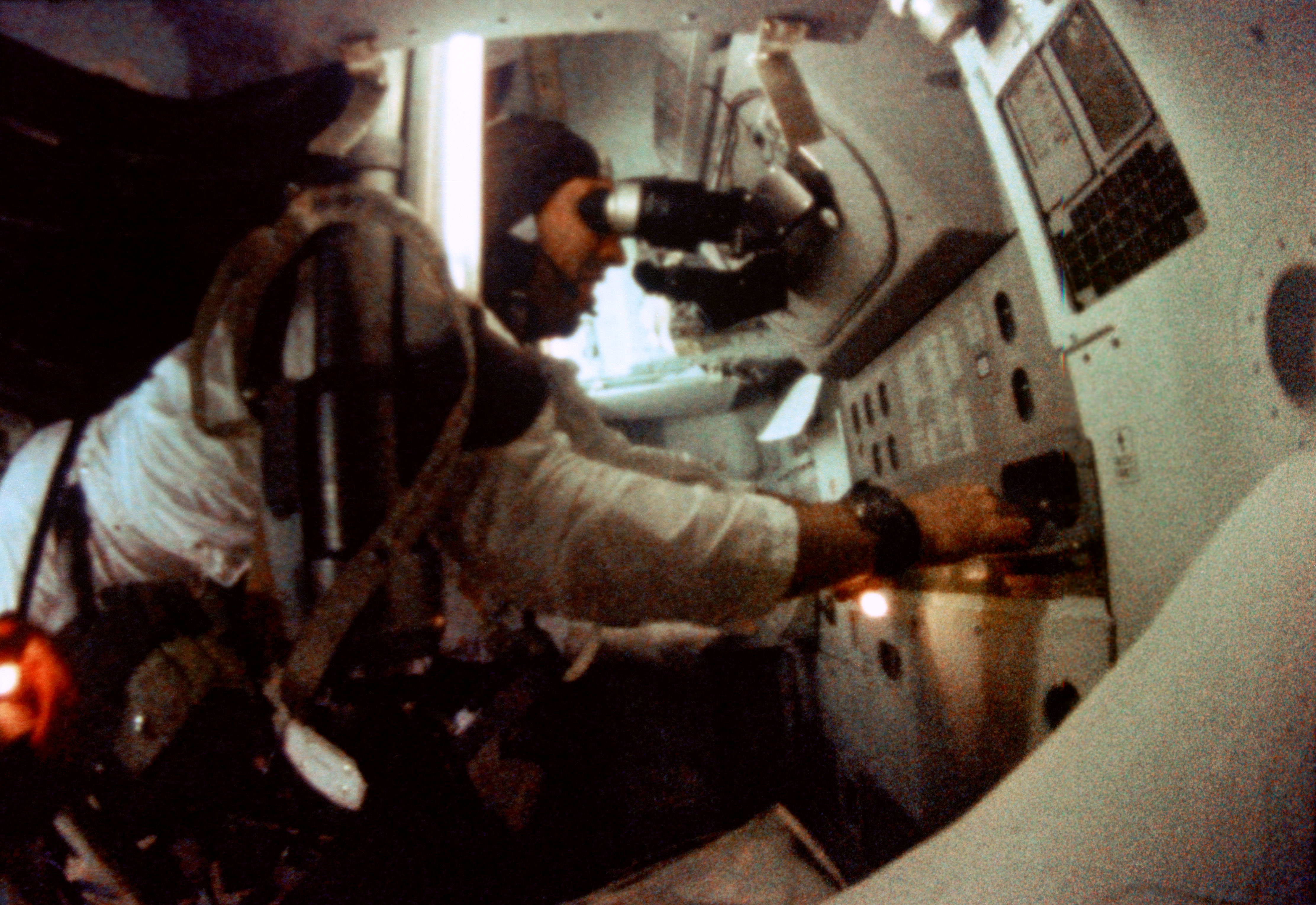 As the mission’s senior pilot, one of Jim Lovell’s responsibilities was taking star sightings and navigational measurements using the sextant and telescope. He is pictured at work in the command module’s lower equipment bay. Photo Credit: NASA
As the mission’s senior pilot, one of Jim Lovell’s responsibilities was taking star sightings and navigational measurements using the sextant and telescope. He is pictured at work in the command module’s lower equipment bay. Photo Credit: NASA
By the afternoon of 23 December, the gravitational influence of their home planet was finally overcome by that of the Moon. At this point, Apollo 8 was 190,000 miles (305,700 km) from Earth and just over 40,000 miles (64,000 km) from its target, and the spacecraft’s velocity had slowed to 2,700 mph (4,350 km/h) as it moved farther into the Moon’s gravitational well. As they sailed toward Lunar Orbit Insertion (LOI), their trajectory was near-perfect: only two of four planned mid-course correction burns had been needed to keep Apollo 8 locked into its free return trajectory. At 3:55 a.m. EST on Christmas Eve, Capcom Gerry Carr told Borman that they were “Go for LOI.”
The three astronauts had still not seen the Moon, despite their close proximity to it, since their angle of approach caused it to be lost in the Sun’s glare. At length, Carr asked them what they could see. “Nothing,” replied Anders glumly, adding “it’s like being on the inside of a submarine.” Less than an hour later, at 4:49 a.m., Apollo 8 passed behind the Moon, with Lovell telling Carr that “we’ll see you on the other side.” Eleven minutes later, they fired the service module’s large Service Propulsion System (SPS) engine for four minutes to reduce their speed and brake themselves into an orbit of 69 x 193 miles (111 x 310 km). The burn was flawless, although Lovell admitted that it was “the longest four minutes I ever spent”. Had the engine burned too long or too short, they could have ended up either crashing into the Moon or vanishing into some errant orbit. Just to be sure, Borman hit the shutdown button as soon as the clock touched zero.
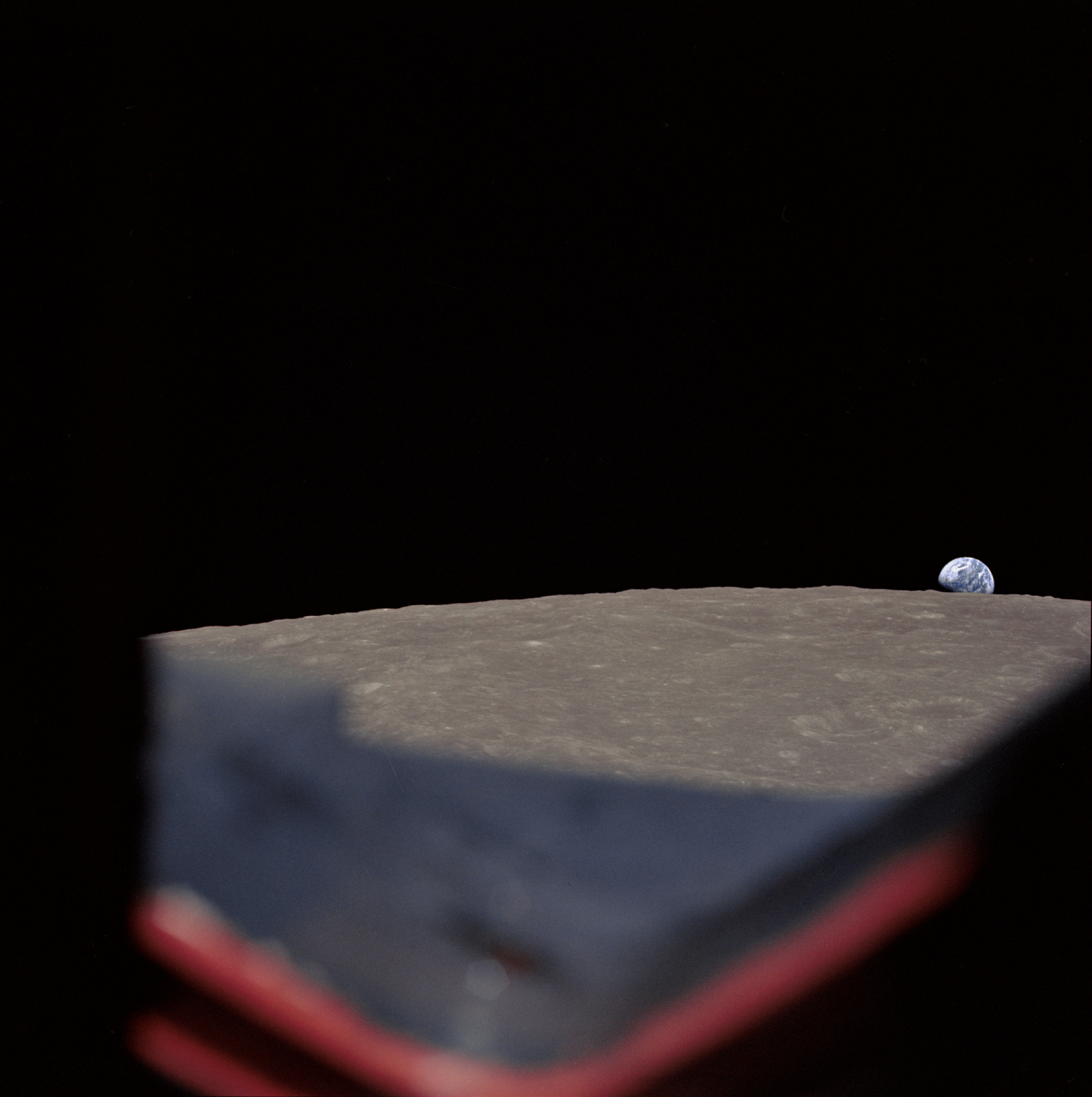 High-oblique view of the lunar terrain, looking west-southwest, at the cusp of Earthrise, from Apollo 8. Photo Credit: NASA
High-oblique view of the lunar terrain, looking west-southwest, at the cusp of Earthrise, from Apollo 8. Photo Credit: NASA
Back on Earth, a tense world—nearly a billion people were listening in, NASA estimated, scattered across 64 different countries—waited for word of their insertion into lunar orbit. If Apollo 8 had not achieved orbit, then Borman, Lovell, and Anders would come back into communications range some ten minutes sooner than planned. At length, right on time, following a 45-minute blackout, public affairs officer Paul Haney announced with joy: “We got it! We got it!”
Fifteen minutes later, the astronauts’ first close-range descriptions of the Moon came across a quarter of a million miles of emptiness. “The Moon,” Lovell began, “is essentially grey; no color; looks like plaster of Paris or sort of a greyish deep sand. We can see quite a bit of detail. The Sea of Fertility doesn’t stand out as well here as it does back on Earth. There’s not as much contrast between that and the surrounding craters. The craters are all rounded off. There’s quite a few of them; some of them are newer. Many of them—especially the round ones—look like hits by meteorites or projectiles of some sort…”
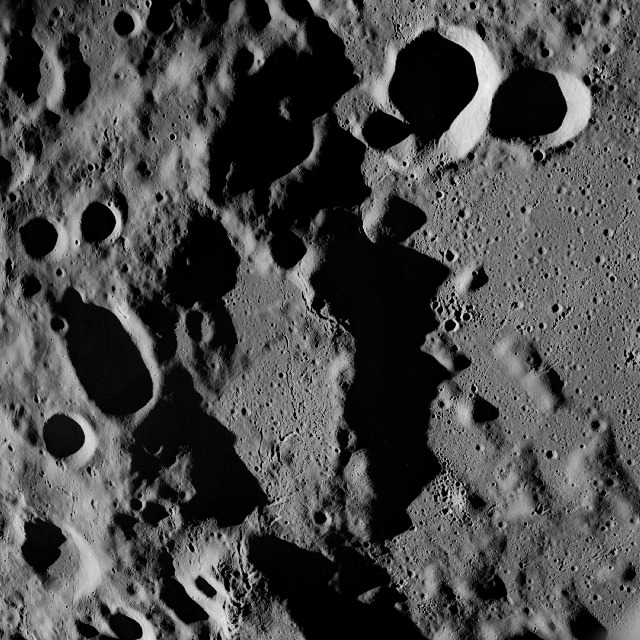 Resembling plaster of Paris, and ubiquitously grey in color, the lunar farside was quite distinct from its Earth-facing side. Photo Credit: NASA
Resembling plaster of Paris, and ubiquitously grey in color, the lunar farside was quite distinct from its Earth-facing side. Photo Credit: NASA
The lack of even the slightest vestiges of an atmosphere lent a weird clarity to what was, in effect, a scene of the utmost desolation, silence, and stillness. Only weeks earlier, the film of Arthur C. Clarke’s, 2001: A Space Odyssey, had premiered and even the astronauts imagined the lunar terrain to be composed of dramatic mountains and jagged cliffs. Instead they were presented with an essentially dead place, ubiquitous in its blandness. Anders, tasked with the bulk of the lunar photography, had his own flight plan to plough through, but found it hard because of dirty windows. In fact, only the command module’s two small rendezvous windows remained reasonably clear.
For Anders, the far side of the Moon, never seen from Earth or ever by human eyes, resembled “a sand pile my kids have been playing in for a long time…all beat up, no definition, just a lot of bumps and holes.” He considered the lunar surface to be unappealing, but with a “stark beauty” of its own, and all three men found pleasure in giving temporary names to some of the craters to honor their colleagues and managers: Low, Gilruth, Shea, Grissom, White, Webb, Chaffee, Kraft, See and Bassett. “These,” said Borman, “were all the giants who made it work.” At one stage, when flight controller John Aaron noticed that the command module’s environmental control system needed adjustment, they responded by naming a crater for him, too. (Before the flight, Lovell had even given his wife, Marilyn, a photograph of a mountain, near the edge of the Sea of Tranquility, which he had unofficially named for her: Mount Marilyn.)
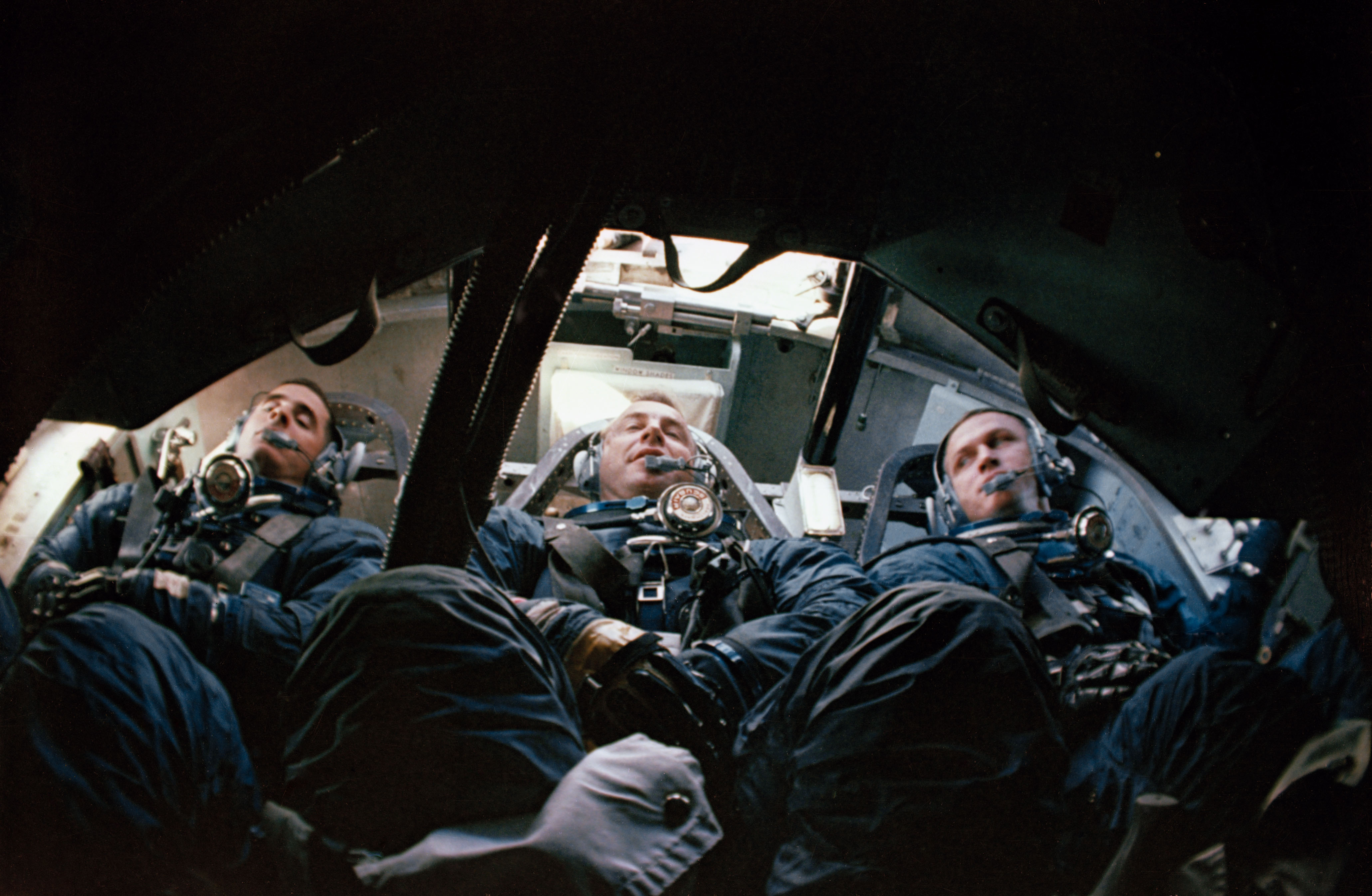 This interesting perspective, captured in the command module simulator in October 1968, illustrates the cramped quarters of the Apollo 8 spacecraft. From left to right are Bill Anders, Jim Lovell and Frank Borman. Photo Credit: NASA
This interesting perspective, captured in the command module simulator in October 1968, illustrates the cramped quarters of the Apollo 8 spacecraft. From left to right are Bill Anders, Jim Lovell and Frank Borman. Photo Credit: NASA
Four hours after entering orbit, another SPS burn—this time thankfully shorter at just 11 seconds—adjusted Apollo 8’s path around the Moon into a near-perfect circle. Then, at 10:37 a.m. EST on 24 December, the astronauts became the first humans to witness “Earthrise” from behind the lunar limb. Borman was in the process of turning the spacecraft to permit Lovell to take some sextant readings, when all at once Anders yelled: “Oh my God! Look at that picture over there.” It would become a running, though light-hearted, competition among the crew over who took the “Earthrise Picture”, which has since become world-famous: a shot of the Home Planet, a pretty blue-and-white marble, rising in the void above the Moon’s grey-brown surface.
With Lovell in attendance, it was Anders who, after fitting the color magazine and aiming the telephoto lens, snapped one of the most iconic images of the Space Age. In perhaps no other image has the beauty, fragility and loneliness of Earth been captured with more meaning. Years later, Anders would win praise from environmentalists for his assertion that Apollo 8’s goal was to explore the Moon…and what it really did was rediscover the Earth!
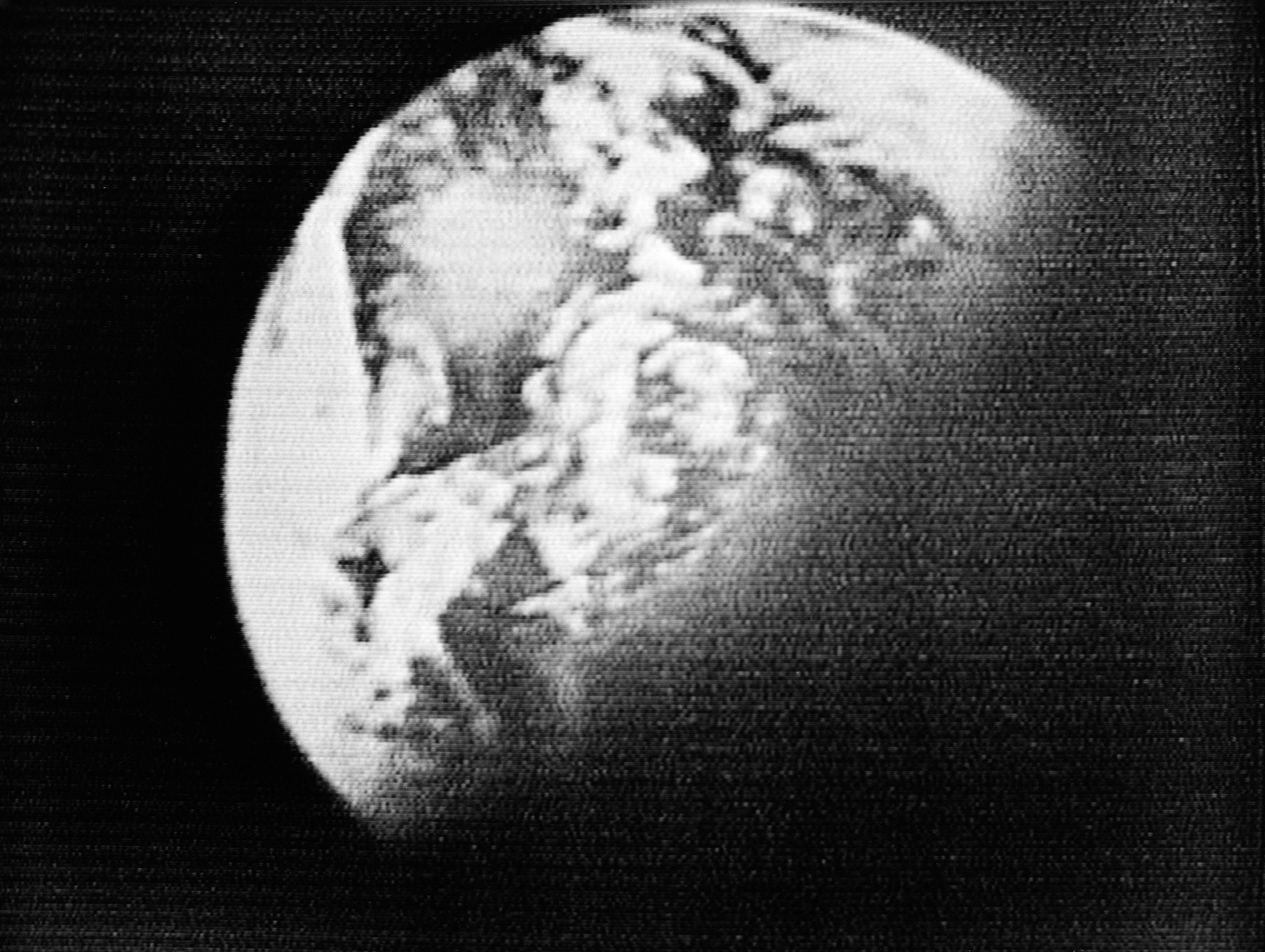 Captured on 26 December 1968, during the journey home, this image exemplifies the irony that Apollo 8 actually rediscovered the Earth. Photo Credit: NASA
Captured on 26 December 1968, during the journey home, this image exemplifies the irony that Apollo 8 actually rediscovered the Earth. Photo Credit: NASA
The astronauts’ intense workload during their 20 hours in orbit was getting the better of them, with tiredness causing them to make mistakes. On occasion, Lovell had punched the wrong code into the command module’s computer, triggering warning alarms, and Anders was overcome with his own schedule: stereo imagery, dim-light photography and filter work. At length, clearly irritated that the timeline was too full, Borman snapped at Capcom Mike Collins that he was taking an executive decision for his two crewmates to get some rest. “I’ll stay up and keep the spacecraft vertical,” he told Collins, “and take some automatic pictures.” With some difficulty, he had to force Lovell and Anders to pry their eyes away from the windows and get some sleep.
It seemed inevitable, after thousands of years of watching and wondering about the Moon, that humanity’s first visit would be commemorated in a religious, spiritual, or symbolic way. Before the launch, Borman, Lovell and Anders had discussed this issue at length with friends and concluded that they would read the story of Creation from the first ten verses of Genesis. During their ninth orbit, on their second live telecast from the Moon, they read it. Anders spoke first, then Lovell, and finally Borman closed with “Good night, good luck, a Merry Christmas and God bless all of you…all of you on the good Earth.”
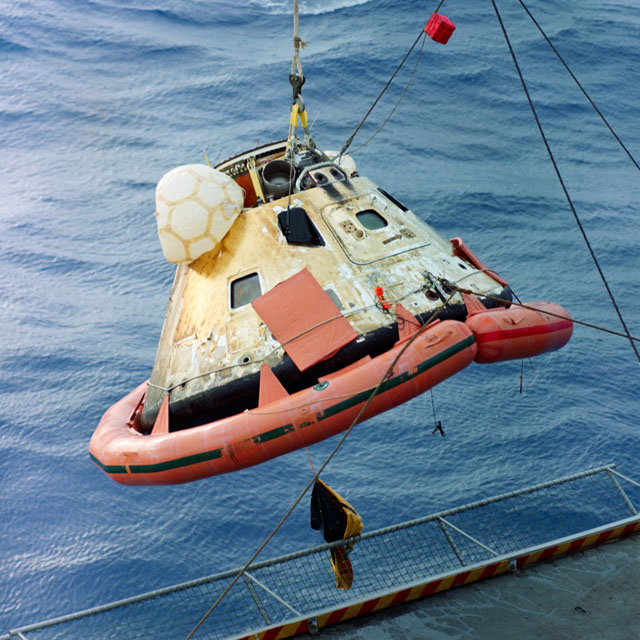 The Apollo 8 command module is recovered on 27 December 1968. Photo Credit: NASA
The Apollo 8 command module is recovered on 27 December 1968. Photo Credit: NASA
Eight minutes into Christmas morning, the return home got underway when the SPS engine was ignited to increase their speed by 2,300 mph (3,700 km/h). As they rounded the Moon for the last time, Lovell told Capcom Ken Mattingly, who was just coming on duty in Houston, “Please be informed there is a Santa Claus.” Mattingly replied that they were the best ones to know.
The return journey proved uneventful, with fogged windows, puddling water and clattering cabin fans creating mere annoyances. A final televised tour of Apollo 8 showed Anders preparing a freeze-dried meal…and, when the camera stopped rolling, they found a treat in their food locker: real turkey and real cranberry sauce, wrapped in foil with red and green ribbons. It turned out to be their best meal of the entire flight, although Borman was annoyed that Deke Slayton had slipped three small bottles of brandy aboard as well. Why, if anything went wrong on the flight, the overly zealous Borman fumed, the press and public would have a field day and blame it on the “drunk” astronauts. Lovell and Anders, who have admitted that they had no intention of touching the brandy, felt that Borman had gone a little too far. Christmas spirit returned, however, with festive presents: pairs of cufflinks and a man-in-the-Moon tie pin from Susan Borman and Marilyn Lovell, and a gold “figure-8” tie pin from Valerie Anders.
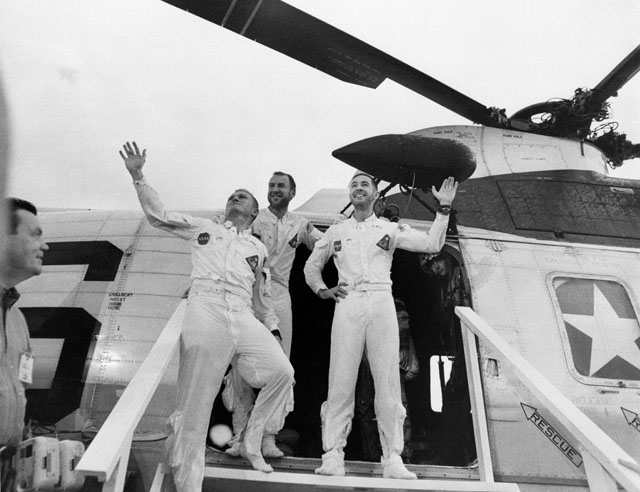 After a dreadful 1968, characterized by the trauma of the Vietnam conflict, civil strife in the United States and political assassinations, Apollo 8 ended the year on a note of hope. Photo Credit: NASA
After a dreadful 1968, characterized by the trauma of the Vietnam conflict, civil strife in the United States and political assassinations, Apollo 8 ended the year on a note of hope. Photo Credit: NASA
Only one minor trajectory correction burn was needed, and early on 27 December the astronauts fired pyrotechnics to jettison the service module and plunged into Earth’s atmosphere at almost 22,000 mph (35,400 km/h). During re-entry, which carried them over northeastern China, then brought the command module in a long slanting path toward the southeast, Borman, Lovell and Anders were subjected to deceleration forces as high as 7 G. Splashdown came as Cape Kennedy clocks read 10:51 a.m., but still in pre-dawn darkness over the western Pacific, completing a mission of just over six days.
Amidst the radio chatter from a rescue helicopter despatched by the aircraft carrier Yorktown came an age-old question which the world now wanted answered. “Apollo 8, is the Moon made from Limburger cheese?”
“Nope,” replied Bill Anders. “It’s made from American cheese!”




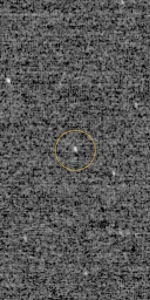
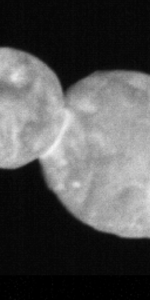
With a 50-year perspective, Apollo 8 remains a wondrous human achievement that will live “in infamy.”
Well it will live in fame anyway.
I like to think a few billion years from now after our species has ascended or some such, alien archeologists find a copy of that and wonder…
Happy New Year!